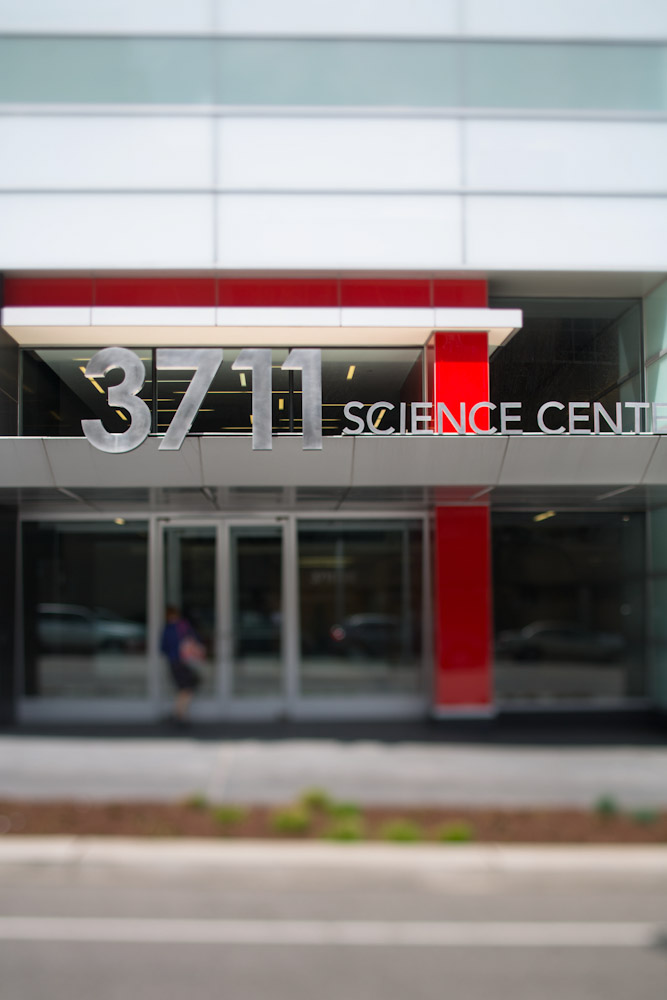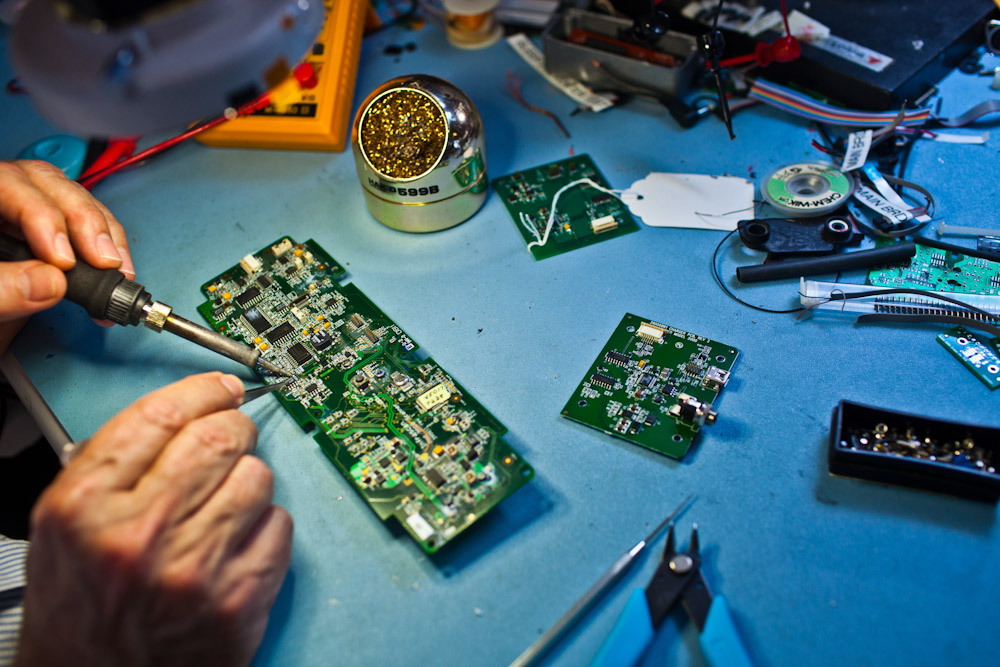As America searches for innovative ways to stimulate local economies and stay competitive in a global market, business and science incubators are popping up all over the country. Philadelphia’s University City Science Center (UCSC) is one of the pioneers of the incubator model, providing lab and office space for start-up, growing, and established companies since 1963.
More than 350 organizations have successfully graduated from the Science Center, leading to 15,000 people now employed by the 93 graduate companies in the Greater Philadelphia Area alone. The Science Center’s Port business incubator gives start-ups and entrepreneurs access to topnotch resources — including collaboration and sharing with Philly’s major academic institutions (namely the University of Pennsylvania and Drexel), collaboration with other start-ups, grant-writing support, marketing and PR assistance, exposure to policy makers, connectivity with capital, office space, and wet and dry labs.
The Science Center has a somewhat unusual structure; it is a nonprofit with 31 shareholders from colleges, universities, hospitals, and research institutions across Pennsylvania, New Jersey, and Delaware. Historically, its roots in the nonprofit sector have to do with the role that the Science Center has played in Philly’s economic development. “We started as an urban renewal project. This area in West Philadelphia was essentially condemned by the city, and they allocated four units — two of the units went to Penn, one went to Drexel, and the last one became the Science Center,” said Science Center President and CEO Stephen Tang.
Here are some figures to get some idea of the degree to which the Science Center currently stimulates Philly’s economy. Annually, graduate companies and Port residents generate $9.2 billion in the region. Port residents have raised over $116 million in investment and $14 million in federal funding since 2006. $64.5 million in tax revenue from graduate and resident organizations goes to Philly and Pennsylvania annually. Resident and graduate organizations form the Science Center generate over 40,000 regional jobs. The average employee salary of the graduate companies is $89,000.

Currently there are 58 Port business incubator companies operating at the Science Center, covering a wide range of potential market opportunities — from healthcare to green tech. Here’s just a handful. Adaptimmune LLC is a start-up out of the United Kingdom, developing treatments to enhance the ability of immune systems to respond to diseases such as HIV, melanoma, ovarian cancer, and hepatic cancer. FLUX Photon Corporation is a research and development company focused on developing materials for renewable energy applications. Hospitalis is a Canadian company that provides mobile, web-based assistance to physicians, allowing multidisciplinary care teams to track patient progress throughout treatment plans.
29 new development projects in University City were recently advanced or completed — representing 4,922,050 million sq. ft. of new office, research, residential, academic, and medical facilities, along with 4.19 acres of public space. This real estate development will mean new connections and opportunities for Science Center residents. Here are some highlights: Drexel’s LeBow College of Business was completed in September 2013; UPenn’s Neural-Behavioral Sciences Building is slated for completion by Spring 2015; UPenn’s South Bank Redevelopment project is ongoing; Penn Medicine’s Advanced Care Hospital Pavilion will be completed by January 2015; The Children’s Hospital of Philadelphia’s Buerger Center for Advanced Pediatric Care will also be done in 2015; and the American Campus Communities is working on the Lancaster Avenue Development for mixed-use retail and student housing (with estimated completion by Fall 2015).
At some point one might ask what is the impact of this type of development on communities, and what is the connection between research-based development and gentrification?
“We’ve always been at this interface between academia and industry. And back in the ‘60s what that really meant was growing the economy, the higher education and medicine based economy…the main mission was not innovation, the main mission was to stabilize this neighborhood,” Tang said.
The West Philly of the early ‘60s, where the Science Center first broke ground, was much different than it is today. According to Tang, photographs of the old neighborhood portrayed a “ramshackle collection of saloons and taverns.”
“In fact some of our contributions have to do with working with local community,” Tang said. “We had the highest concentration of indigent African Americans, some of whom were afraid they were going to be displaced, so we had to work with the neighborhood in that respect. So our community mission was really set before this vision of innovation and entrepreneurship.”
The Science Center’s historical relationship to the community in West Philadelphia can be told in different ways, depending on whose perspective it is. In 1966 “civil rights advocates” warned that the condemning of Unit 3 by the United States Department of Housing might cause riots. The situation was deescalated when the Redevelopment Agency (RDA) agreed to return 7.6 acres in public housing across Unit 3.
Questioning the role of development projects like UCSC on the existing Black community is not unreasonable. According to the 1960 federal census, non-whites occupied 333 of 429 units (almost 78 percent) in the redevelopment area. Ten years later, once Unit 3 was cleared, only 15 residences remained in the neighborhood. A local population was displaced, with the majority of residents being Black. Eminent domain is the legal process behind condemnation, requiring that the government fairly compensates people whose property is taken. In the case of Unit 3 residents, compensation consisted of moving costs and consulting services.
While it’s undeniable that UCSC led to a population shift in West Philadelphia, it is also true that the redevelopment project has led to economic opportunities and job growth in Philadelphia and the surrounding regions (especially in the pharma and biotech sectors).
Tang’s parents were immigrants from China who came to the States to work in academia. Tang’s upbringing motivated him to earn his doctorate in Chemical Engineering from Lehigh University and an M.B.A from the Wharton School of Business at UPenn. The entrepreneurial environment fostered by UCSC supports a diverse background of scientists and engineers from all over the world.
“There’s a very strong correlation between immigrants and entrepreneurship,” Tang said.
While it is true that the development of UCSC over the last 40 plus years has contributed to an overall trend of gentrification in West Philly, it also true that the Science Center has grown Philadelphia’s economy and currently supports new cutting-edge R&D and business opportunities in the region.
Looking ahead, promoting STEM (Science, Technology, Engineering, and Mathematics) may have the potential to mobilize Philly’s Black communities to be active in the ongoing development of UCSC (as many already are).
True innovation is spurred by diversity — diversity of ideas and of experience. People of all ethnicities and backgrounds have the opportunity to contribute to the growing enterprise and research facilitated by the Science Center, helping maintain Philly’s spot on the map as a science and research giant.

